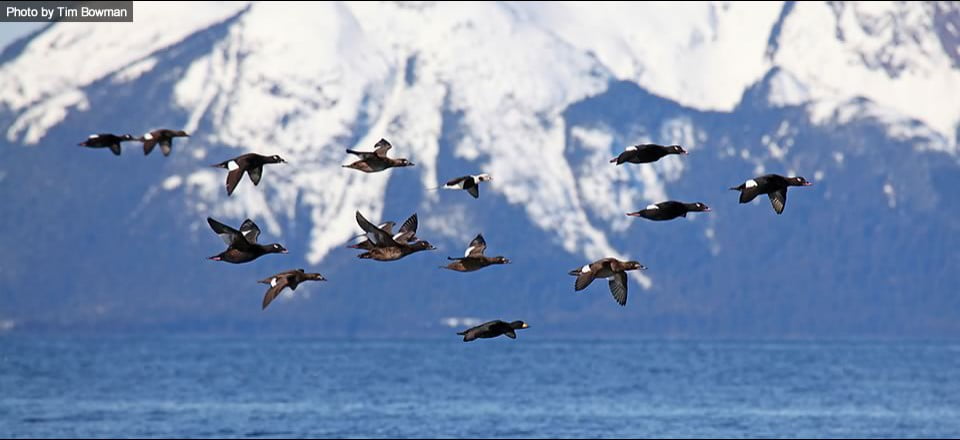Lead Institution(s): US Fish and Wildlife Service
Project Lead: Walt Rhodes
Collaborator(s): Scott Gilliland (CWS), Emily Silverman (USFWS)
Focal Species: All Sea Ducks, Bufflehead (Bucephala albeola), Barrow’s Goldeneye (Bucephala islandica), Common Goldeneye (Bucephala clangula), Harlequin Duck (Histrionicus histrionicus), Long-tailed Duck (Clangula hyemalis), Common Eider (Somateria mollissima), King Eider (Somateria spectabilis), Spectacled Eider (Somateria fischeri), Steller’s Eider (Polysticta stelleri), Common Merganser (Mergus merganser), Hooded Merganser (Lophodytes cucullatus), Red-breasted Merganser (Mergus serrator), Black Scoter (Melanitta americana), Surf Scoter (Melanitta perspicillata), White-winged Scoter (Melanitta delgandi)
Project Description: SDJV’s Atlantic and Great Lakes Sea Duck Migration Study provided a completely new view of black scoter breeding range and demonstrated that the majority of females ( 70%) migrated to breeding sites just outside of the BPOP survey area in a portion of the region known as the Canadian Barrenlands, an area that encompasses portions of Manitoba, Saskatchewan, Northwest Territories, and Nunavut. A large-scale and systematic breeding waterfowl survey has never been conducted in the Barrenlands. This project had multiple objectives: 1) determine the feasibility and logistics to operate in the region; 2) determine population size and delineation for a host of waterfowl species, particularly sea ducks; 3) develop information to inform population objectives; 4) identification of important waterfowl habitats; and 5) verification of Atlantic & Great Lakes Migration Study results.

